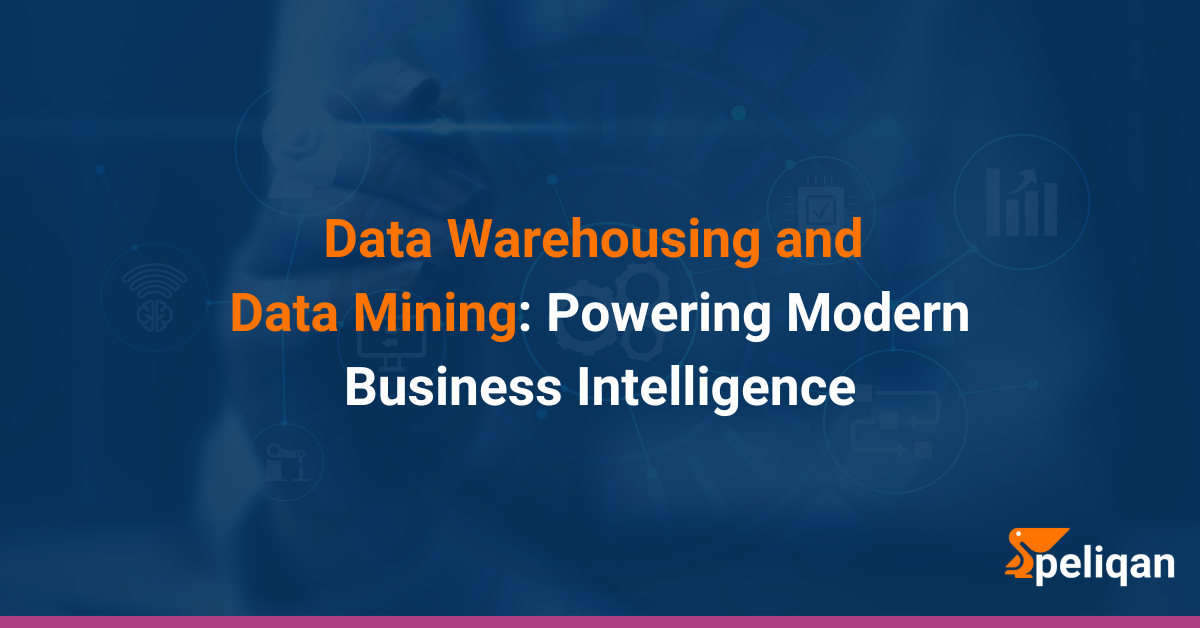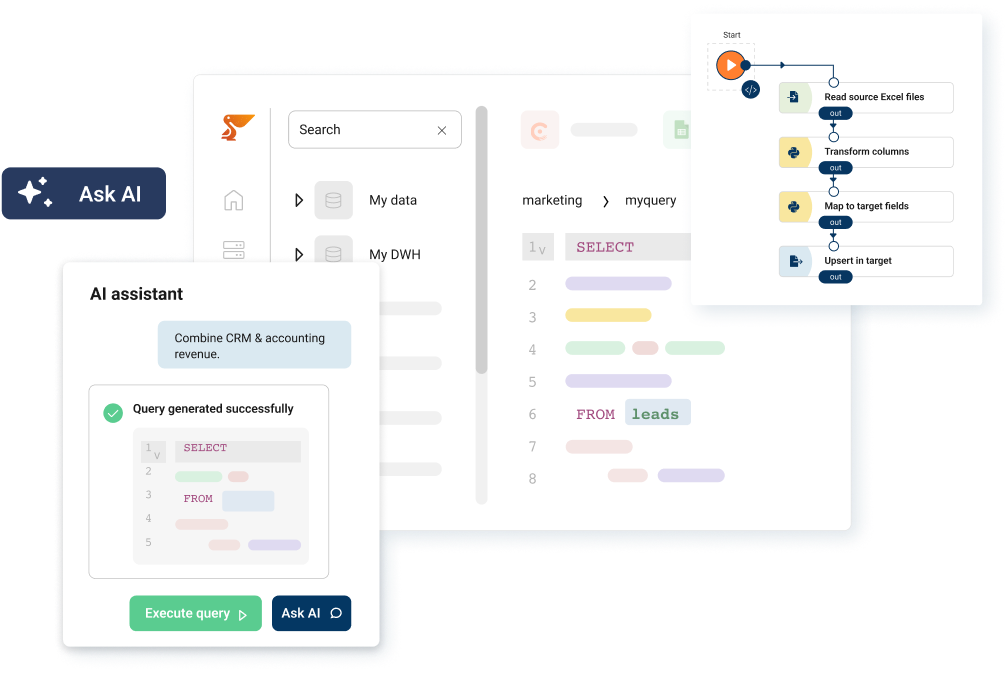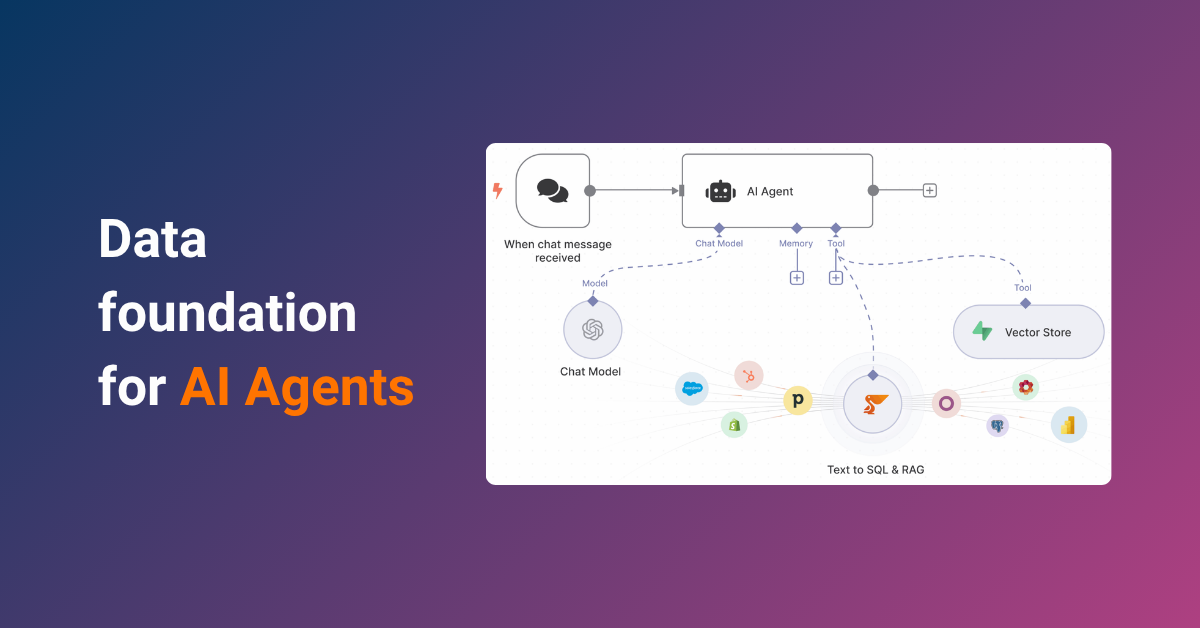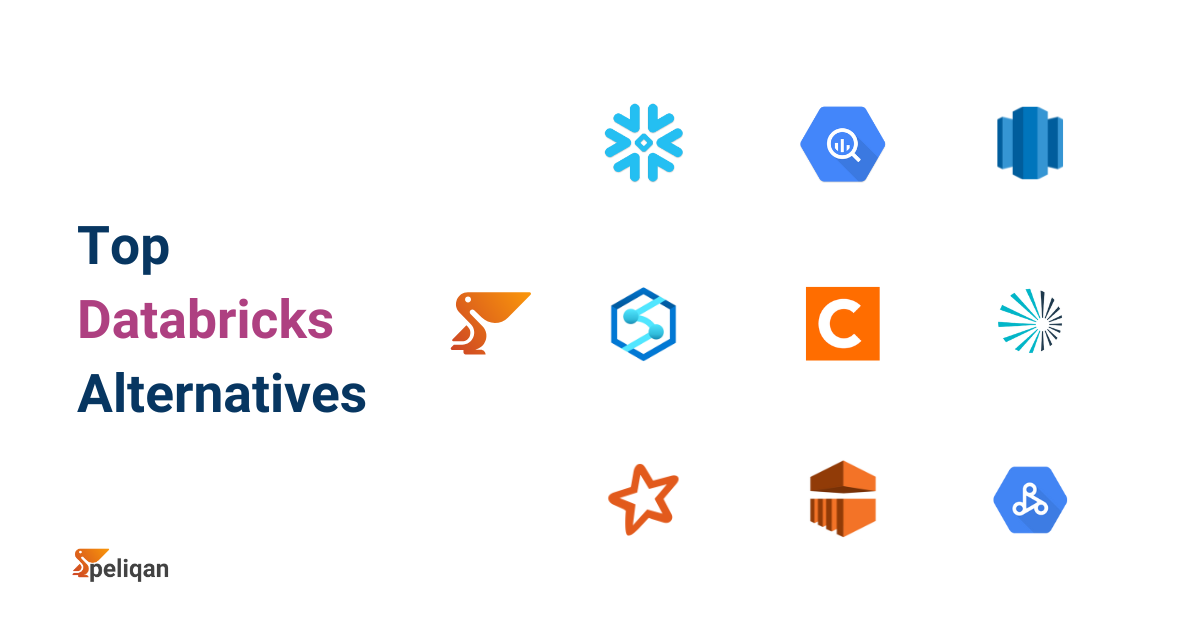In today’s data-driven business landscape, organizations are increasingly turning to data warehousing & data mining to gain a competitive edge. These two interrelated disciplines form the backbone of modern business intelligence, enabling companies to store, analyze, and extract valuable insights from vast amounts of information.
This comprehensive guide explores the synergy between data warehousing and data mining, their key features, and how they work together to drive informed decision-making in various industries.
The Foundations of Data Warehousing in Data Mining
Data warehousing is the critical first step in the data mining process. It involves collecting, organizing, and storing large volumes of data from various sources into a centralized repository. This repository, known as a data warehouse, serves as the foundation for effective data mining operations.
Key Features of Data Warehouses for Mining
- Subject-oriented: Organized around specific business areas for focused analysis
- Integrated: Consolidates data from multiple sources for comprehensive mining
- Time-variant: Preserves historical data for trend analysis and predictive modeling
- Non-volatile: Provides stable datasets for consistent mining results
The Role of Data Warehousing in the Mining Process
- Data consolidation: Gathering relevant information from diverse sources
- Data cleansing: Ensuring data quality for accurate mining outcomes
- Data structuring: Organizing information to facilitate efficient mining algorithms
- Data accessibility: Providing easy access to large datasets for mining operations
Data Warehousing vs Data Mining: Understanding the Distinction
While data warehousing & data mining are closely related, they serve different purposes in the data analytics ecosystem. Let’s compare these two concepts to clarify their roles:
| Aspect | Data Warehousing | Data Mining |
|---|---|---|
| Primary Purpose | Collect, store, and manage data | Analyze data to extract insights |
| Process | ETL (Extract, Transform, Load) | KDD (Knowledge Discovery in Databases) |
| Data Handling | Stores structured, cleaned data | Analyzes data to find patterns |
| Time Orientation | Historical and current data | Predictive and descriptive analysis |
| User Focus | IT professionals, data engineers | Data analysts, business users |
| Output | Organized data repository | Actionable insights, patterns, trends |
| Tools | Database management systems, ETL tools | Statistical analysis, machine learning algorithms |
With a solid understanding of how data warehousing supports mining, let’s explore the data mining process itself and how it leverages the data warehouse.
Data Mining: Extracting Insights from the Data Warehouse
It is the process of discovering patterns, correlations, and trends within the large datasets stored in data warehouses. It involves applying sophisticated algorithms and statistical techniques to extract meaningful information that can inform business strategies.
Data Mining Techniques Utilizing the Data Warehouse
Association Rule Mining: Identifying relationships between variables in the warehouse
- Example: Discovering which products are frequently purchased together
- Applications: Market basket analysis, cross-selling strategies
Classification: Categorizing new data based on patterns found in the warehouse
- Example: Predicting customer churn based on historical behavior
- Applications: Customer segmentation, risk assessment
Clustering: Grouping similar data points within the warehouse
- Example: Identifying customer segments with similar purchasing habits
- Applications: Targeted marketing, customer profiling
Regression Analysis: Modeling relationships between variables in the warehouse
- Example: Forecasting sales based on historical data and external factors
- Applications: Demand forecasting, financial modeling
Anomaly Detection: Identifying unusual patterns in warehouse data
- Example: Detecting fraudulent transactions in financial data
- Applications: Fraud prevention, quality control
The Data Mining Process in Data Warehouses
To illustrate how data mining leverages the data warehouse, let’s examine the typical workflow:
| Step | Data Warehousing Role | Data Mining Role |
|---|---|---|
| 1. Business Understanding | Provides context and historical data | Defines objectives based on available data |
| 2. Data Selection | Offers organized, accessible datasets | Selects relevant data for analysis |
| 3. Data Preprocessing | Ensures data quality and consistency | Cleans and prepares data for analysis |
| 4. Data Transformation | Structures data for efficient access | Converts data into suitable formats |
| 5. Data Mining | Provides optimized data retrieval | Applies algorithms to extract patterns |
| 6. Pattern Evaluation | Supplies additional data for validation | Assesses significance of discovered patterns |
| 7. Knowledge Presentation | Stores results for future reference | Visualizes and reports findings |
This table illustrates the symbiotic relationship between data warehousing and data mining throughout the analytical process.
OLAP Operations in Data Warehouse and Data Mining
Online Analytical Processing (OLAP) is a key technology that bridges data warehousing and mining. OLAP enables multidimensional analysis of data stored in the warehouse, facilitating the discovery of patterns and trends. Common OLAP operations include:
- Roll-up: Aggregating data to a higher level of granularity
- Drill-down: Navigating from summary data to more detailed information
- Slice and dice: Selecting and projecting data from different dimensions
- Pivot: Rotating the data view to gain new perspectives
These operations allow analysts to explore data from various angles, supporting the data mining process by enabling interactive data exploration and hypothesis testing.
Now that we’ve explored how data warehousing and mining work together, let’s examine some real-world applications that demonstrate their combined power.
Practical Applications of Data Warehousing and Mining
The integration of data warehousing and mining drives innovation across various industries. Here are some examples:
Retail and E-commerce
Customer Segmentation: Mining warehouse data to create targeted marketing campaigns
- Analyze purchase history, browsing behavior, and demographic information
- Develop personalized promotions and product recommendations
Market Basket Analysis: Identifying product associations to optimize store layouts
- Discover frequently co-purchased items
- Improve product placement and cross-selling strategies
Demand Forecasting: Analyzing historical data to predict future sales trends
- Incorporate seasonal patterns, economic indicators, and marketing events
- Optimize inventory management and supply chain operations
Healthcare and Life Sciences
Disease Pattern Recognition: Mining patient data warehouses to improve diagnoses
- Identify risk factors and early warning signs for various conditions
- Develop predictive models for disease progression
Drug Discovery: Analyzing molecular databases to identify potential treatments
- Screen compound libraries for potential drug candidates
- Predict drug interactions and side effects
Resource Optimization: Using warehoused data to predict patient admissions
- Forecast hospital bed occupancy and staffing needs
- Improve emergency room management and resource allocation
Financial Services
Fraud Detection: Mining transaction warehouses to identify unusual patterns
- Develop real-time anomaly detection systems
- Create risk scores for transactions and accounts
Risk Assessment: Analyzing historical data to evaluate credit risks
- Build credit scoring models based on customer attributes and behavior
- Assess portfolio risk and optimize investment strategies
Customer Churn Prediction: Mining customer databases to improve retention
- Identify early warning signs of customer dissatisfaction
- Develop targeted retention campaigns and personalized offers
Application of Data Warehouse and Data Mining in DBMS
Database Management Systems (DBMS) play a crucial role in supporting data warehousing and mining operations:
- Data Storage: DBMS provides efficient storage and retrieval mechanisms for large volumes of data in the warehouse
- Query Optimization: Advanced query processing techniques in DBMS enhance the performance of data mining operations
- Data Integrity: DBMS ensures data consistency and accuracy, which is crucial for reliable mining results
- Security: Access control and encryption features in DBMS protect sensitive data during warehousing and mining processes
- Scalability: Modern DBMS solutions offer scalable architectures to handle growing data volumes in warehouses
While these applications showcase the power of data warehousing and mining, organizations must navigate several challenges to maximize their benefits.
Overcoming Challenges in Data Warehousing and Mining
While data warehousing and mining offer immense potential, organizations must navigate several challenges to maximize their benefits. Let’s explore five key areas that require attention and strategic planning:
Data Quality
Ensuring accuracy and consistency in the data warehouse is paramount for reliable mining outcomes. Organizations must implement robust data validation and cleansing processes throughout the data lifecycle.
This involves establishing comprehensive data governance policies and standards that define data quality metrics, ownership, and maintenance procedures. By prioritizing data quality, businesses can build a solid foundation for trustworthy insights and decision-making.
Scalability
As data volumes continue to grow exponentially, managing this growth while maintaining mining performance becomes increasingly challenging. To address this, many organizations are turning to cloud-based solutions that offer flexible storage and computing resources.
Additionally, implementing distributed processing techniques for large-scale data mining can help handle massive datasets efficiently. By embracing scalable architectures, businesses can ensure their data warehousing and mining capabilities grow in tandem with their data.
Security
Protecting sensitive information in the data warehouse during mining operations is crucial in today’s cybersecurity landscape. Organizations must employ robust encryption and access control mechanisms to safeguard data at rest and in transit.
Furthermore, implementing data masking and anonymization techniques for sensitive information can help maintain privacy while still enabling valuable insights to be extracted. A comprehensive security strategy ensures that data assets remain protected throughout the warehousing and mining processes.
Integration
Seamlessly connecting data warehousing and mining processes is essential for maximizing the value of both technologies. This requires developing a unified data architecture that supports both warehousing and mining operations cohesively.
Implementing effective metadata management ensures consistency across systems and facilitates smooth data flow between warehousing and mining stages. By focusing on integration, organizations can create a more efficient and streamlined data analytics ecosystem.
Skill Gap
Developing expertise in both data warehousing and mining techniques is a significant challenge for many organizations. To address this, companies should invest in comprehensive training programs for their data professionals, covering both technical skills and business acumen.
Collaborating with academic institutions and industry partners for knowledge exchange can also help bridge the skill gap. By nurturing a skilled workforce, organizations can fully leverage the potential of their data warehousing and mining initiatives.
Conclusion
Data warehousing & mining are inseparable components of modern business intelligence. The data warehouse serves as the foundation, providing a structured, integrated repository of information. Data mining, in turn, leverages this warehouse to uncover hidden patterns, trends, and insights that drive strategic decision-making.
As we continue to generate unprecedented volumes of data, the importance of effective data warehousing and mining will only grow. Organizations that invest in these technologies and develop the skills to leverage them effectively will be well-positioned to thrive in an increasingly data-centric world.
This is where Peliqan comes into play. As a cutting-edge platform designed to streamline data warehousing and mining processes, Peliqan offers a comprehensive solution to many of the challenges discussed in this article. With its advanced data quality management tools, scalable cloud-based architecture, and robust security features, Peliqan empowers organizations to build and maintain high-performance data warehouses that serve as a solid foundation for sophisticated data mining operations.
Whether you’re just beginning your data journey or looking to enhance your existing analytics capabilities, understanding the synergy between data warehousing & mining is crucial. By embracing powerful tools like Peliqan, you can transform raw data into actionable insights, driving innovation and success in the digital age.









